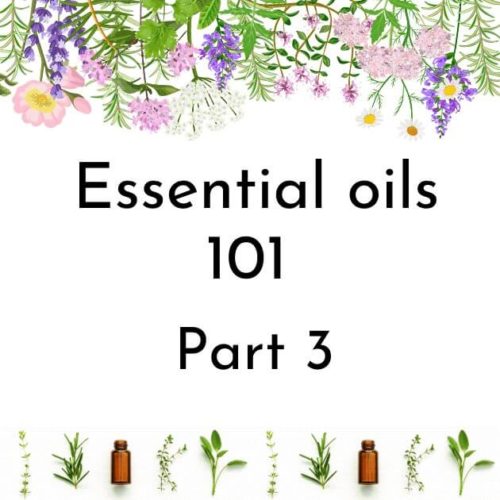This is blog 3 on essential oils and today I am talk about safety and essential oils, because there are serious adverse reactions that may occur to misuse of essential oils.

One of the first lessons on my skincare formulation course is on essential oil usage. The advice given is very basic, but essential to my studies (e.g.) do not apply essential oils neat to skin – always, always dilute in a carrier oil.
The rationale for these basic precautions is that they will prevent long-term sensitisation to essential oil compounds. Repeated contact to even low doses is the culprit with many essential oils – and one that is easily avoidable.
Similarly, inhaling (neat) essential oils on a regular basis is a bad idea, given the large component of volatile compounds it contains.
Safety precautions for essential oils

I would encourage you to exercise the following precautions
- Never buy essential oils that are in transparent or light coloured vessels. Essential oils are readily oxidized and change composition on exposure to sunlight.
- Always, always buy from a reputed supplier/seller. This is one product, where you should absolutely NOT be looking for a bargain.
- Many essential oils (especially) sandalwood are prone to being adulterated because they are so expensive
- Sandalwood, Frankincense, Jasmine and Rose are all examples of essential oils prone to adulteration because they are so expensive to make
- Always use gloves when handling essential oils.
- Why? Long-term exposure to unadulterated essential oils can cause skin sensitization or irritation. This is 101 advice given to aromatherapists who deal with essential oils as part of their daily job
- Do not use essential oils past their use by date. This should not be more than 6-12 months from date of opening (if not less)
- It is important that you store essential oils in cool, dark place away from sunlight. I live in a very hot country – some of my essential oils are stored in a dark lined box in the fridge.
- Do not get the essential oils anywhere near your eyes. Period.
- Do not ingest essential oils
- Measuring essential oils. Use % and not drop sizes.
Measuring essential oils
It makes my blood boil when I see youtube videos suggesting 20 drops of this essential oil, 10 drops of essential oil B. This is a recipe only for creating the perfect conditions for a future adverse skin reaction
You and I know 20 drops of two liquids (eg) water and milk have different volumes. Given everything I’ve told you about essential oil usage, do you really want to overuse any essential oils?
YOU must use percentages and an accurate weighing scale.
If you can afford to buy an essential oil (a luxury commodity) you can afford a weighing scale.
E.g., if a recipe calls for 100g of coconut oil, 20 drops of rosemary oil, 10 drops of neem oil and 5 drops of lavender oil, then this is how you would convert all the measurements to %.

In my next blog I will be looking at country regulation for essential oils
See also
